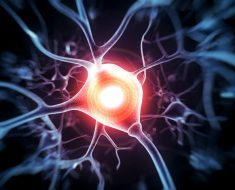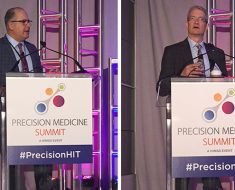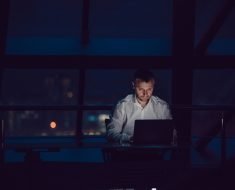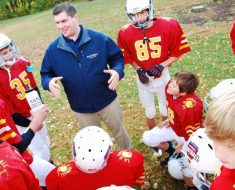Longtime Beth Israel Deaconess Medical Chief Information Officer Dr. John Halamka left that role six months ago after more than two decades – during which time he also became one of the most vocal health information technology champions and visible thought leaders during a pivotal time of IT uptake.
Halamka has been traveling the world recently – more than 400,000 miles each year, he says – from Europe to Israel to Africa to China, back to his Sherborn, Massachusetts-based Unity Farm Sanctuary for a quick visit with Dudley, his shaggy Scottish Highland Bull, and then out again to explore the newest global trends in leading-edge digital health.
Halamka will keynote the ConVerge2Xcelerate event in Boston on October 15, hosted by Blockchain in Healthcare Today – where he is editor-in-chief – and co-presented as part of the preconference activities of the Connected Health Conference.
We caught up with him recently at another Boston event and asked him about what he’s seeing on his travels.
Q. You were CIO of Beth Israel Deaconess for so long – twenty two years. How has your newish gig, as International Healthcare Innovation Professor, been going?
A. That’s my academic title, my Harvard Medical School title, and that was three years ago. But the official transition from CIO, a hospital based-title, was March 1, 2019. That’s when the merger of Beth Israel and Lahey came together, and the CEO and I talked about: How do you create innovation?
Q. So what is next? What have you been seeing on your travels that’s intriguing?
A. So if you look all over the world the themes are very similar: We have aging societies. Pretty much every country. So in China, Japan, the Nordics, Germany, UK, US, everyone is living longer, but birth rates are in many countries not at replacement levels.
So just look, for example, at the Medicare trust fund: 3.5 people are going to be paying for my mom’s retirement. 2.5 people are going to be paying your retirement. That fund is going broke. But countries all over the world are saying, wait a minute: healthcare is expensive, people are aging, we don’t have enough workers paying for them, don’t have enough doctors to care for them.
We have to work differently. No one says, ‘What I really need is an API. I mean no one wakes up thinking that. But they do say. You know we can scale machine learning techniques, mobile, internet things in a way that you don’t need to drive to a doctor’s office and be seen – in fact you can go deal with a chat bot. For a lot of the stuff you could deal with the machine learning algorithm for a lot. So you can use your specialty resources and a whole lot wiser fashion if you virtualize them over a set of tools so when practicing and to have their license.
So all these countries are asking these questions. And how do you do that while maintaining privacy security and patient choice. These are hard problems. But the urgency to do it is high. Because the healthcare systems in most of the world aren’t sustainable.
Q. You mentioned practicing at the top of one’s licence. At Health 2.0 in September, Mayo Clinic CIO Cris Ross gave a speech on that very topic – and he said that AI is one of the key things that will enable physicians to do just that. “This artificial intelligence stuff is real,” he said. Do you agree?
A. Well, absolutely. And so I ask the question: What is the machine learning application of 2019. you’re going to want to adopt? Is it to replace our doctors with machine learning? No. It’s going to be the simpler stuff, that’s real.
Now, I’ll give you a real case: I was keynoting this Health Catalyst conference. I was doing all this flying hadn’t slept a whole lot. This wonderful group of people took me out to dinner. I was hydrated. Big meal. I stood up from the chair and I passed out.
First time in my life it’s ever happened. So ask yourself: The differential diagnosis for this 57 year old guy, hypertension history inherited from my father, unknown meds of any significance, no neurologic or cardiac issues to date, is lying on the floor unconscious.
So play out the probabilities of disease. Well part of it is my genome. And part of it is my phenotype. And part of it is also my exposome. I’m from Massachusetts, where my farm is at the very center of Triple E and West Nile. And 48 hours before going to Salt Lake, I was working at night being eaten alive by mosquitoes next to the swamp.
So what do I have? What are you going to do? Well, the problem is you need techniques these machine learning techniques that look at population experience and at least give you guidance of probability.
And in my particular case, there was more data: I’m wearing an engineering sample of the Withings Move ECG, it’s just going through FDA clearance now. It has a full recording of my 1-lead ECG. So you could actually watch bradycardia immediately return to normal pulse.
I had a vasovagal episode. I fainted. Because I was hot, dehydrated, had just eaten an enormous meal and the blood from my head went to my stomach. It was not West Nile. It was not a stroke. It was not a heart attack.
But machine learning can say, “Here are your probabilities of disease states, doctor. As you evaluate this patient, take those into consideration.” So it’s workflow enhancement, decision support enhancement, which helps augment clinician resources so they’re more efficient.
Q. You mentioned that the big issue problems you see around the world are largely the same, whether it’s the Nordics or a place like China. But obviously there’s specific regional differences, countries are different places on the continuum with regard to their technological maturity, there are different imperatives for value-based care. What are some of the notable things you’ve seen recently in your travels? Specifically, perhaps, since the ATLAS conference is all about patient access, with regard to that?.
A. Let’s take Israel as an example. I do not endorse any product or service. This has nothing to do with any financial interests. But there’s a wonderful machine learning researcher, Dr. Kira Radinsky, in Tel Aviv who started a company called Diagnostic Robotics.
And what does that do? So you the patient woke up with a headache. Oh, is that headache different than usual? Do you have numbness, weakness? You answer all the questions and it’s essentially Waze for medicine: Here’s where you’re sitting right now, and there are three doctors and here’s where they are, and they are the folks that are going to be able to address the signs and symptoms you’ve delineated.
And so you say, “OK, I want to go to this one.” You book an appointment. And the note is auto generated based on the data that you’ve put into your phone. So in effect it’s in Epic by the time you see the physician, the notes already written. And it includes at the bottom a little machine learning grid that says, based on everything we’ve heard about this patient, doctor, here are the three or four likely care plans you might want to do.
So, Waze for healthcare. Not a bad idea! And that’s coming out of Israel. The challenge in China is there’s no primary care. And so the Chinese are also quite interested in creating tools for patients and families so that people get to that right setting of care at the right cost at the right time.
Q. No primary care – so how does it work?
A. You show up wherever you want. “I hear Dr. Famous is good.” And the queues are hours and hours long. I’s not an efficient use of existing resources, but it’s not fun for patients and family either.
Societies don’t have the ability to navigate a healthcare system with transparency. And I think, especially when you have limited resources and limited funds, we’ve got to do that more efficiently.
Q. You moderated a panel today at the ATLAS Symposium about transformational strategies. What are some things you’ve learned from your time at BIDMC and now travelling around the world about building a culture of transformational change?
A. There has to be an urgency to change, an incentive to change. And a willingness to accept failure. That’s really a key issue.
So many organizations say, “Oh, well, we’ve never tried this before. It could fail.” Yeah, it could. And that’s OK. It can. Each of the panelists today runs an innovation center or transformation center where they’ve got a protective space to fail. In fact, they celebrate failure. They even said they’re going to give the best failure award of the year. It’s a badge of courage.
And I contrast that with two societies. I love Japan. But everybody there is very concerned about face. Respect. Reputation. So if you go to a Japanese person and say, “We want you to try something novel and you may fail completely,” it’s like, “Oh, well then I’d better not do it.” The notion of an entrepreneurial Japanese person is tough because of that concern.
And in Germany they’re very risk averse. Fabulous engineering, but they have the same sort of issue. What if we don’t succeed? Our reputational loss will be hard to recover from. It’s very to get innovation if you’re so risk averse.
Now, I don’t mean that we’re going to compromise patient privacy or safety. That’s not what we’re talking about here. You set guardrails so its appropriate, but we’re just willing to tolerate experimentation.
Q. Speaking of being cautious. What are your thoughts on the proposed 21st Century Cures rules from ONC? Some pretty big stakeholders have said they want to slow them down or scale them back, and have called for more congressional oversight.
A. I have a couple thoughts. First of all, understand exactly what happens every time there’s a new rule. It doesn’t even matter what the rule says. I served the Bush administration for four years, the Obama administration for six years. And here’s what the regulators told me: If you want to go to the moon, make sure you legislate or regulate a trip to Mars. Because that’s what’s going to everyone’s going to happen: “Mars? Are you crazy? Oh, moon? That’s OK.” You always ask for more and then you settle on something a little less. That’s totally normal.
Everyone agrees patient universal access to data is great. No one’s arguing that. It’s about workflow. And so the example I raised this morning is my mom is approaching 80. And I said, “Mom, you know we’ve got Argonaut FHIR enabled API and you can download all your data.”
And she said, “I don’t know what that means and I’m not sure why I want to, but I’m very happy to delegate to you that responsibility.” Well at the moment we don’t quite have the workflow that enables an elder to delegate to another person full access to their API data downloads. We want that and we need that. We just don’t have it. We’ve gotta figure that out.If you look at the workflow implementation of the rule there’s a lot of subtlety that we need to work through.
And secondly, the rule says any app. So that could be an app from two guys in Shanghai in a garage and it’s malware. Should be a credentialing or certification process for the app? And maybe the regulation says we will let in those apps that at least have had some sort of review process.
I have no inside information, but let me tell you what I think the strategy is: What is the technical difference between adding an API for a patient and family access or adding an API for provider or payer access? The answer is there’s basically no technical difference. So again just guessing what Seema Verma was thinking.
Who’s going to object to patients getting access to their own data. No one! So let’s start with that because it means you’ll put the technical infrastructure in – and then it’s really straightforward to expand it to other use cases.
Q. What else is on your radar screen for emerging technologies, based on what you’ve seen around the world?
A. Clearly, everyone’s moving to cloud-hosted services. EHRs should not be pieces of software hosted on ground that you have to maintain a patch and all the rest right. The service model clearly is the direction it’s going in. Our incumbent EHR vendors are slowly getting there.
And why is that so key? Let’s say there’s a service that I want. How easy is it to plumb from cloud to cloud? Not hard, right? It’s not an IT thing or a firewall thing. Connecting an external service to a cloud-hosted EHR is pretty straightforward. So it offers agility.
Patients and families want to use mobile apps in their phones to access services. And so certainly we’re seeing the move to Internet of Things, connected devices, monitors in the home.
Certainly that’s a trend. But figuring out what to do with that data – where to store it, how to interpret it, that’s still a challenge.
Q. What about blockchain? On top of all your other credentials, you’re also editor-in-chief of Blockchain in Healthcare Today.
A. Blockchain is a distributed ledger you can write to and never erase. It isn’t a database. It isn’t an analytic tool. But it’s good for certain kinds of use cases. You see the pharmaceutical industry, which is required to do lot number tracking, purity tracking and that sort of thing. Fabulous thing to do. We’ll write our lots into the ledger. You’ll understand what was produced where we could track medications for safety. Right.
Or Synaptic Health Alliance: a bunch of payers who created provider directories, put a ledger up there that anyone can read and that will be a provider directory for universal use. Great idea.
Or here’s a plaintiff-attorney example: You weren’t admitted to Harvard. I’m so sorry. But then your parents sue because clearly I must have made a mistake delivering you as a baby 23 years ago. I make this up as a silly example, but you would not believe the malpractice assertions that happen. And they say, “Produce the records from 23 years ago,” and I say, “Here they are.” But they say, “Those are incomplete. Or, “Those have been altered over time.”
Blockchain can be used to say, “Look I at the time wrote a note. The note was hashed. The hash was put in the blockchain. Twenty-three years go by, and look, the note still matches the hash. I can prove the medical records weren’t altered in those 23 years. So it’s proof of data integrity. That’s another great use case.
Q. What else do you see, when you look into the future?
A. The hardest aspect of everything we’re talking about is what the nature of a hospital and doctor’s office will look like in, pick your timeframe, 10 years, 25 years. Although I always hate to say 25 years, because who would have predicted the Internet as it is back then? You know who would have protected the rise of Facebook, Amazon, Netflix and Google?
Q. Even 12 years ago, the smartphone didn’t exist.
A. And maybe that was okay. (Laughs.) But If you think of what the hospital of the next decade is going to turn into, how many ward beds are we’re going to have? Fewer and fewer. Because much of what we do today in a ward bed can be done in an ambulatory setting, or your home.
Hospitals, I guess, are going to transform an emergency department that is still going to be dealing with traumatic issues –heart attack, stroke, etc. – and a bunch of ICU beds for the sickest of the sick. And everything else becomes a bunch of distributed digital health services.
And when you say to hospital CEOs, “So what are you doing to close your ward beds and become a digitally-transformed organization moving services to the cloud and becoming virtual, they say, “Oh. That sounds like a threat to my existence. I don’t know.” So I think the hardest part of the next 10 years will be a radical transformation of business models.
Q. But meanwhile, rural hospitals keep closing. In a lot of these places there’s not even broadband.
A. As I travel the world, in rural India rural Africa, and rural China and I’ve got five bars of 4G and yet there are places in Boston where I can’t make a call. So you are correct that the infrastructure – 4G, 5G, ubiquitous wireless broadband – is a kind of prerequisite for having this digital health system of the future. Especially if we’re going to reach into rural areas and offer telemedicine and telehealth.
Q. So how much traveling do you do these days? Have your tracked how many days a year you’re on the road?
A. I’ll do 400,000 mile this year. Flight attendants are only allowed 250,000 because of the wear and tear. So clearly, I’m doing something wrong (laughs). I give the frequent flyer miles to my Mom and she travels free wherever she goes.
But the other interesting challenge is that since I’m serving governments throughout the world – I joke that the only governments I’m not serving areNorth Korea and Iran, but pretty much everybody else – I’m put on the state airline of every country which means I don’t have loyalty in any one airline, and therefore I’m not quite platinum.
Q. So what are your travel tips? You mentioned the reason you wear black all the time is that it’s easy on the road.
A. Pack light. Less is more. Never check. When it comes to dealing with jet lag, and alcohol and caffeine don’t help. They actually just make you feel worse. Melatonin, Ambien, taking drugs is not going to help. So when you land in a place, eat. Food. On the schedule of the place you work in. So when you have breakfast in the place that you’re in, you more rapidly say, “Oh, it’s morning now. Never nap. That will really screw you up.
Q. Not even a power nap? They say those are good for you.
A. Generally true. But what could happen when you nap is you soon discover it’s 10 p.m. in the place you’re in and you’re like, “Oh I’m wide awake.” Just power through the fatigue of the first day, eating the meals on schedule and sleeping you know 10 p.m. to 6 a.m. in the place you are. Exercise. Avoid the alcohol and caffeine trap. And you’ll be OK.
Q. You must look forward to getting back to the farm.
A. Yes, but I have 10 keynote addresses this week, so it won’t be until Saturday. But I’m looking forward to a day of just shoveling manure.
Q. I saw your photos of your highland bull. He’s an impressive animal.
A. I get home and give him a back rub. He misses me.
Twitter: @MikeMiliardHITN
Email the writer: [email protected]
Healthcare IT News is a publication of HIMSS Media.
Source: Read Full Article





